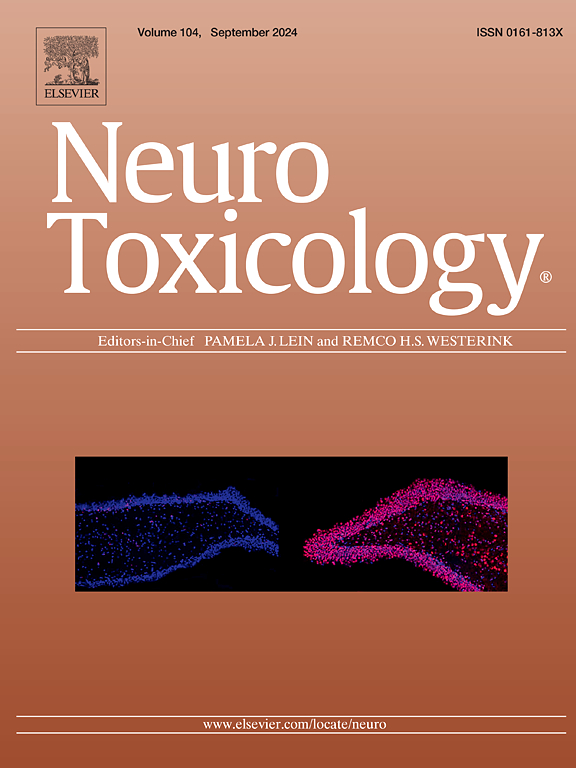Tanshinone IIA mitigates postoperative cognitive dysfunction in aged rats by inhibiting hippocampal inflammation and ferroptosis: Role of Nrf2/SLC7A11/GPX4 axis activation
IF 3.9
3区 医学
Q2 NEUROSCIENCES
引用次数: 0
Abstract
Objective
Postoperative cognitive dysfunction (POCD) is a common and debilitating complication in elderly patients following surgery, leading to increased morbidity and reduced quality of life. This study aims to investigate the neuroprotective effects of Tanshinone IIA, a lipophilic compound derived from Salvia miltiorrhiza, in an aged rat model of POCD, and explore its underlying molecular mechanisms.
Methods
POCD model was established by a modified abdominal exploratory laparotomy. Rats were then intraperitoneally administered with Tanshinone IIA (10 mg/kg, 20 mg/kg, or 40 mg/kg) for 30 days. Cognitive functions were assessed using the morris water maze, novel object recognition test, and Y-maze test. Synaptic structures in the hippocampal CA1 region were examined by electron microscopy. Inflammatory and ferroptosis pathways were evaluated by measuring inflammatory cytokines (TNF-α, IL-6, IL-1β, IL-4), nitric oxide synthase (iNOS) activity, lipid peroxidation products (malondialdehyde [MDA]; 4-hydroxy-2-nonenal [4-HNE]), Fe2 + levels, and antioxidant enzymes (superoxide dismutase [SOD], glutathione [GSH]) using ELISA and commercial kits. mRNA and proteins levels were quantified by real-time quantitative polymerase chain reaction and western blot analysis.
Results
Tanshinone IIA significantly ameliorated cognitive deficits in aged POCD rats according to behavioral tests. It also restored synaptic ultrastructure in the hippocampal CA1 region and upregulated the expressions of synaptic proteins, including synapsin-1 and PSD-95. In addition, Tanshinone IIA effectively suppressed the hippocampal inflammatory pathway, as evidenced by the decreased levels of pro-inflammatory cytokines (TNF-α, IL-6, IL-1β), an increased level of the anti-inflammatory cytokine IL-4, and the upregulation of the iNOS/NO pathway in the hippocampus. Furthermore, Tanshinone IIA mitigated ferroptosis by reducing MDA and 4-HNE contents, lowering Fe2+ level, and enhancing SOD activity and GSH level. Notably, Tanshinone IIA activated the Nrf2/SLC7A11/GPX4 axis in the hippocampus of aged POCD rats.
Conclusion
These findings suggest that Tanshinone IIA exerts neuroprotective effects in an aged rat model of POCD by attenuating hippocampal inflammation and ferroptosis, primarily through the activation of the Nrf2/SLC7A11/GPX4 axis.
丹参酮IIA通过抑制海马炎症和铁下沉减轻老年大鼠术后认知功能障碍:Nrf2/SLC7A11/GPX4轴激活的作用
目的术后认知功能障碍(POCD)是老年患者手术后常见的衰弱性并发症,导致发病率增加和生活质量下降。本研究旨在研究丹参酮IIA对老年POCD大鼠的神经保护作用,并探讨其可能的分子机制。方法采用改良剖腹探查法建立spocd模型。然后给大鼠腹腔注射丹参酮IIA(10 mg/kg、20 mg/kg或40 mg/kg) 30天。采用morris水迷宫、新物体识别测试和y形迷宫测试评估认知功能。电镜观察海马CA1区突触结构。通过测量炎症细胞因子(TNF-α、IL-6、IL-1β、IL-4)、一氧化氮合酶(iNOS)活性、脂质过氧化产物(丙二醛[MDA];4-羟基-2-壬烯醛[4-HNE]), Fe2 +水平和抗氧化酶(超氧化物歧化酶[SOD],谷胱甘肽[GSH])使用ELISA和商业试剂盒。采用实时定量聚合酶链反应和western blot法测定mRNA和蛋白水平。结果丹参酮IIA对老年POCD大鼠认知功能障碍有明显改善作用。恢复海马CA1区突触超微结构,上调突触蛋白synapsin-1和PSD-95的表达。此外,丹参酮IIA有效抑制海马炎症通路,表现为降低促炎细胞因子(TNF-α、IL-6、IL-1β)水平,升高抗炎细胞因子IL-4水平,上调海马iNOS/NO通路。丹参酮IIA通过降低MDA和4-HNE含量,降低Fe2+水平,提高SOD活性和GSH水平来减轻铁下垂。值得注意的是,丹参酮IIA激活了老年POCD大鼠海马中的Nrf2/SLC7A11/GPX4轴。结论丹参酮IIA主要通过激活Nrf2/SLC7A11/GPX4轴,减轻老年POCD大鼠海马炎症和铁下沉,从而发挥神经保护作用。
本文章由计算机程序翻译,如有差异,请以英文原文为准。
求助全文
约1分钟内获得全文
求助全文
来源期刊

Neurotoxicology
医学-毒理学
CiteScore
6.80
自引率
5.90%
发文量
161
审稿时长
70 days
期刊介绍:
NeuroToxicology specializes in publishing the best peer-reviewed original research papers dealing with the effects of toxic substances on the nervous system of humans and experimental animals of all ages. The Journal emphasizes papers dealing with the neurotoxic effects of environmentally significant chemical hazards, manufactured drugs and naturally occurring compounds.
 求助内容:
求助内容: 应助结果提醒方式:
应助结果提醒方式:


